Year 2
The English curriculum is built around the three interrelated strands of language, literature and literacy. Teaching and learning programs should balance and integrate all three strands. Together, the strands focus on developing students' knowledge, understanding and skills in listening, reading, viewing, speaking, writing and creating. Learning in English builds on concepts, skills and processes developed in earlier years, and teachers will revisit and strengthen these as needed.
In Year 2, students communicate with peers, teachers, students from other classes and community members.
Students engage with a variety of texts for enjoyment. They listen to, read, view and interpret spoken, written and multimodal texts in which the primary purpose is to entertain, as well as texts designed to inform and persuade. These encompass traditional oral texts, picture books, various types of print and digital stories, simple chapter books, rhyming verse, poetry, non-fiction, film, multimodal texts, dramatic performances and texts used by students as models for constructing their own work.
The range of literary texts for Foundation to Year 10 comprises Australian literature, including the oral narrative traditions of Aboriginal and Torres Strait Islander Peoples, as well as the contemporary literature of these two cultural groups, and classic and contemporary world literature, including texts from and about Asia.
Literary texts that support and extend Year 2 students as independent readers involve sequences of events that span several pages and present unusual happenings within a framework of familiar experiences. Informative texts present new content about topics of interest and topics being studied in other areas of the curriculum. These texts include language features such as varied sentence structures, some unfamiliar vocabulary, a significant number of high-frequency sight words and words that need to be decoded phonically, and a range of punctuation conventions, as well as illustrations and diagrams that support and extend the printed text.
Students create a range of imaginative, informative and persuasive texts including imaginative retellings, reports, performances, poetry and expositions.
(source: www.australiancurriculum.edu.au)
Achievement Standard
Receptive modes (listening, reading and viewing)
By the end of Year 2, students understand how similar texts share characteristics by identifying text structures and language features used to describe characters and events, or to communicate factual information.
They read texts that contain varied sentence structures, some unfamiliar vocabulary, a significant number of high-frequency sight words and images that provide extra information. They monitor meaning and self-correct using knowledge of phonics, syntax, punctuation, semantics and context. They use knowledge of a wide variety of letter-sound relationships to read words of one or more syllables with fluency. They identify literal and implied meaning, main ideas and supporting detail. Students make connections between texts by comparing content. They listen for particular purposes. They listen for and manipulate sound combinations and rhythmic sound patterns.
Productive modes (speaking, writing and creating)
When discussing their ideas and experiences, students use everyday language features and topic-specific vocabulary. They explain their preferences for aspects of texts using other texts as comparisons. They create texts that show how images support the meaning of the text.
Students create texts, drawing on their own experiences, their imagination and information they have learnt. They use a variety of strategies to engage in group and class discussions and make presentations. They accurately spell words with regular spelling patterns and spell words with less common long vowel patterns. They use punctuation accurately, and write words and sentences legibly using unjoined upper- and lower-case letters.
(source: www.australiancurriculum.edu.au)
- Plus Plan
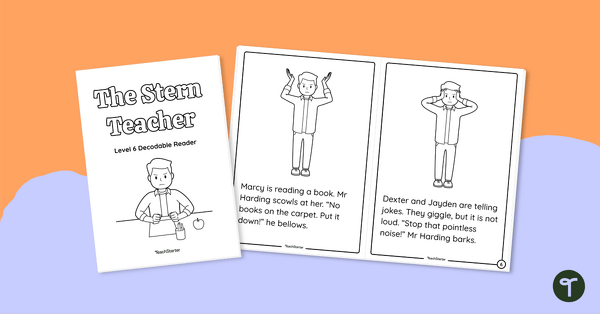
The Stern Teacher - Decodable Reader (Level 6)
Develop confident, successful readers with this phonics-based, printable decodable book.
- Plus Plan
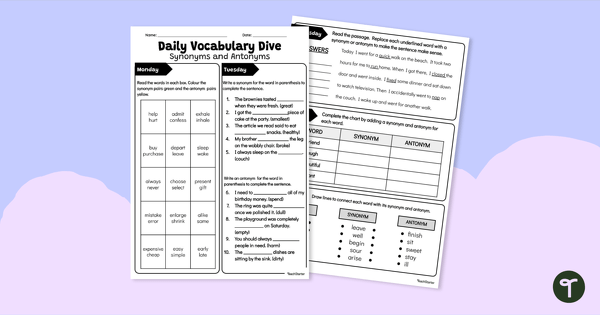
The Synonym Shop - Vocabulary Worksheet
Go shopping for synonyms with a fun “Synonym Shop” colouring worksheet.
- Plus Plan
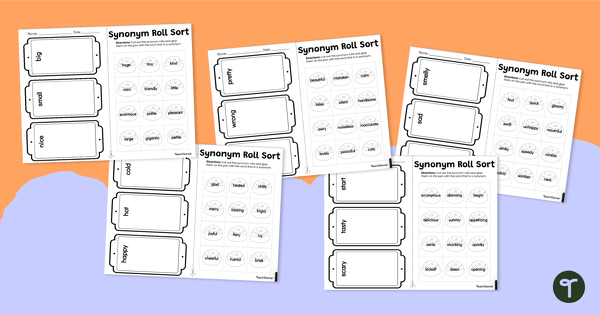
Sort the Synonym Rolls Worksheets
Encourage your kids to take a bite out of language learning with our sweet “Synonym Roll” sorting worksheets.
- Plus Plan
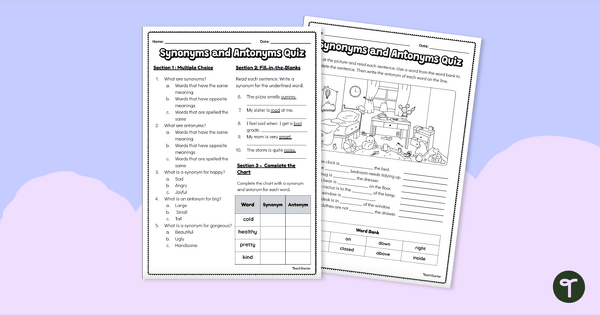
Synonyms and Antonyms Quiz
Assess your students’ knowledge of synonyms and antonyms with a vocabulary quiz.
- Plus Plan
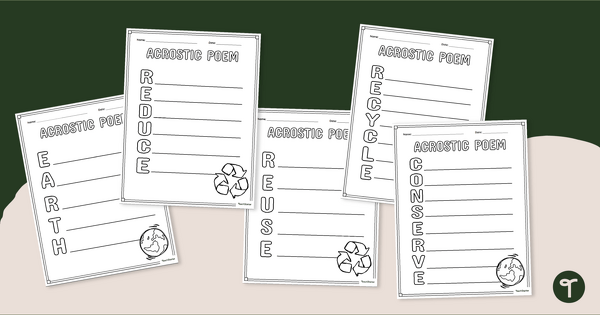
Earth Day - Acrostic Poem Template Pack
An acrostic poem template to use in the classroom to celebrate Earth Day and National Poetry Month.
- Plus Plan
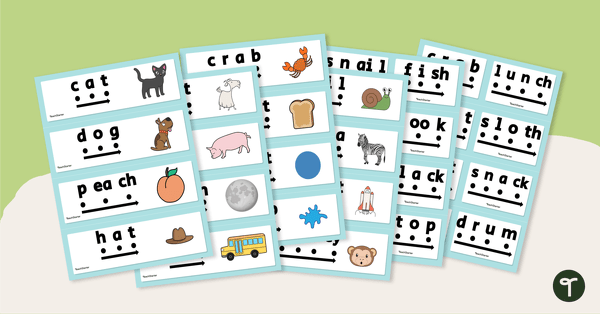
Blending Phonemes Fluency Strips
Develop students’ ability to blend phonemes in common words with this comprehensive set of phoneme blending fluency strips.
- Plus Plan
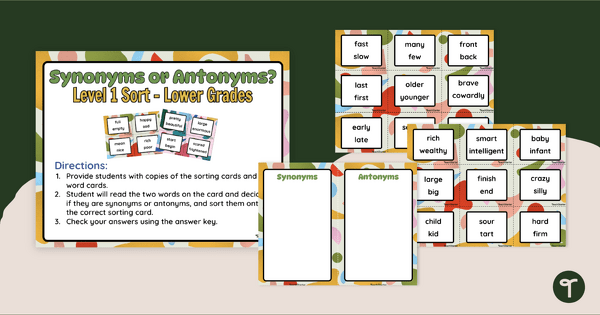
Synonyms and Antonyms Sorting Activity
Practise identification of synonyms and antonyms with a sorting activity.
- Plus Plan
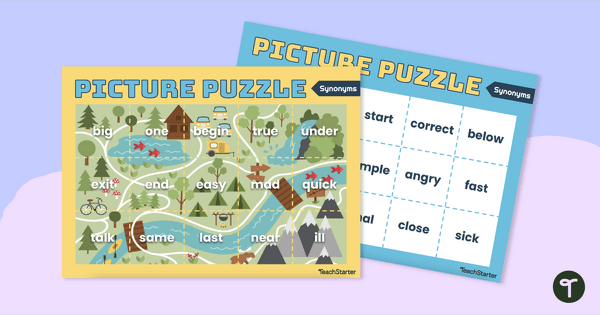
Synonyms Picture Puzzle
Build vocabulary skills with a fun Synonyms Picture Puzzle.
- Plus Plan
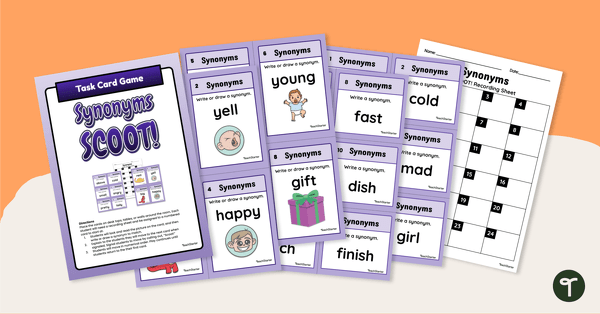
Synonyms - SCOOT! Task Cards
Build vocabulary and recognition of synonyms with a fun game of SCOOT!
- Plus Plan
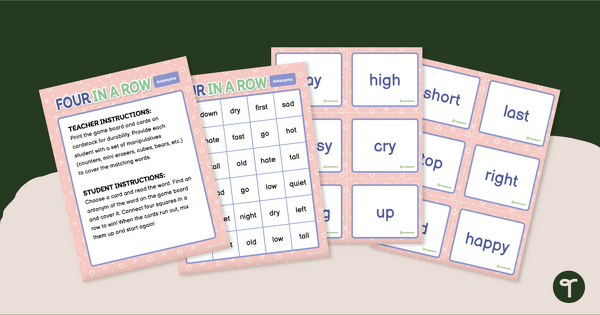
Four in a Row — Opposite Word Game
Practise identifying and using antonyms with a Four in-a Row Antonym Game!
- Plus Plan
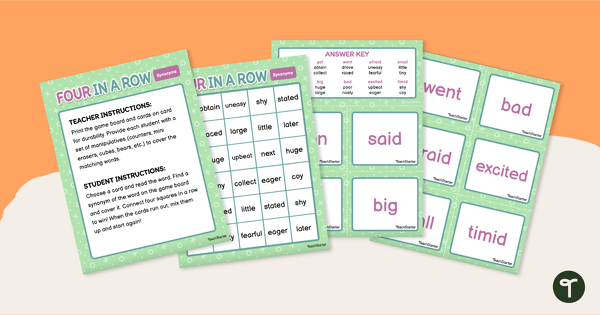
Four in a Row - Synonym Game
Make learning synonyms fun with our Four in a Row Synonym Game.
- Plus Plan
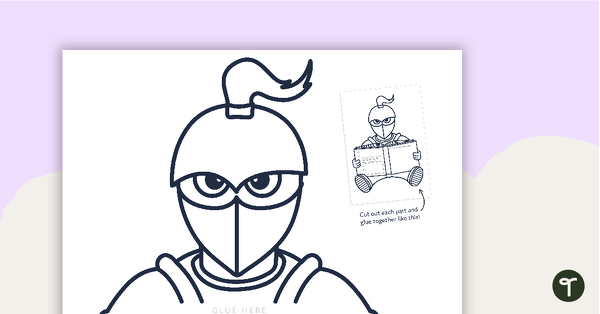
Knight Book Report Template
A book report template fit for a... knight!
- Plus Plan
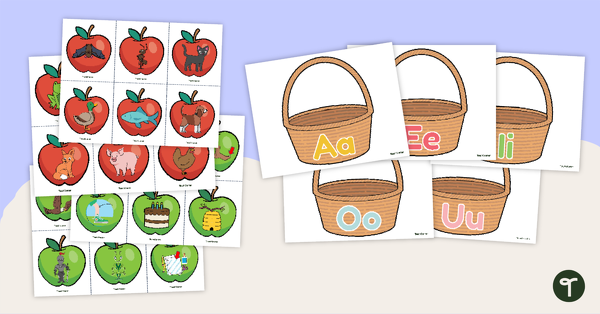
Vowel Sorting Activity - Short and Long Vowels
Supplement your phonics lessons with an apple-themed vowel sound sorting activity.
- Plus Plan
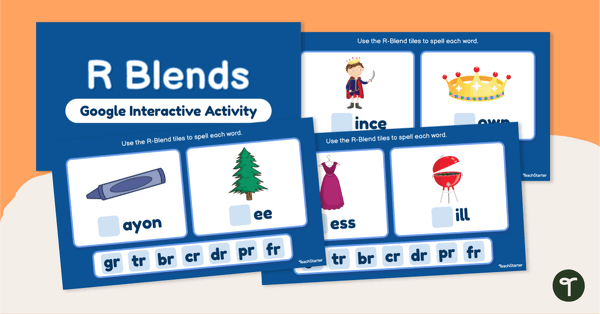
Initial R-Blends - Interactive Activity
Become familiar with words that begin with an r-blend using this interactive digital resource.
- Plus Plan
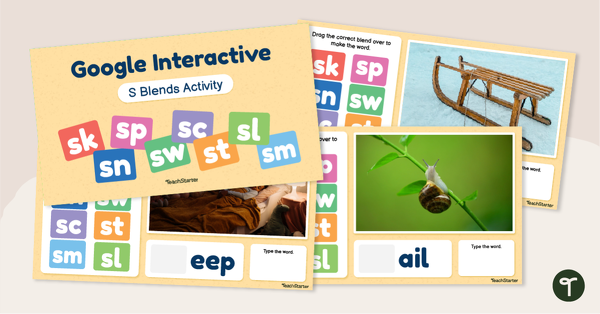
Initial S-Blends - Interactive Activity
Become familiar with words that begin with an s-blend using this interactive digital resource.
- Plus Plan

Syllable Types Bingo
Practise identifying the six syllable types in common words with this fun and engaging bingo game.
- Plus Plan
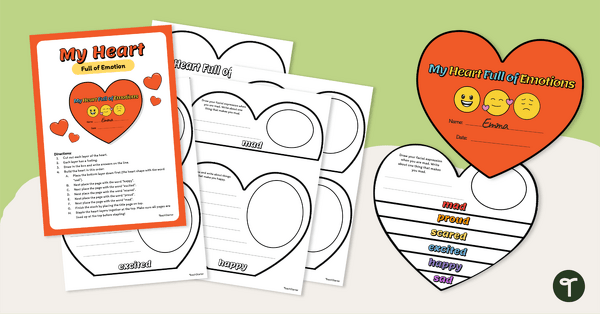
My Heart Full of Emotions Activity
Promote mindfulness and self reflection by writing out descriptions of different emotions.
- Plus Plan
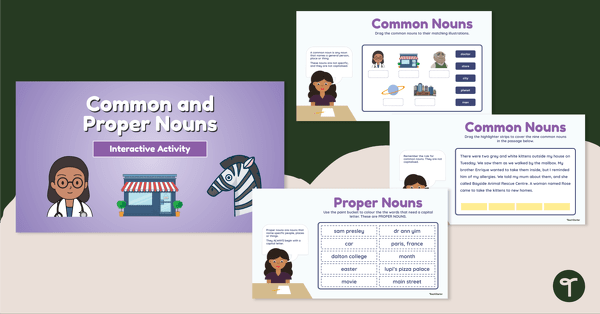
Common and Proper Nouns - Interactive Activity
Identify common and proper nouns by sorting words in their context.
- Plus Plan
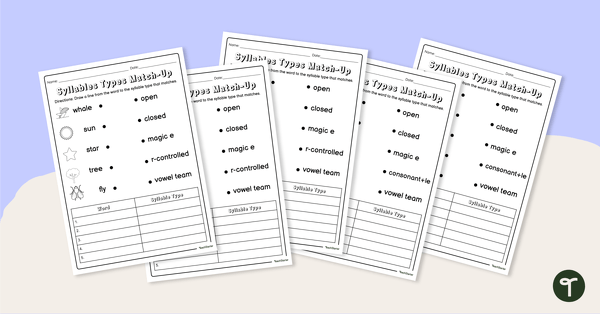
Syllable Types Match-Up Worksheets
Identify and match words to the correct syllable types with this set of five worksheets.
- Free Plan
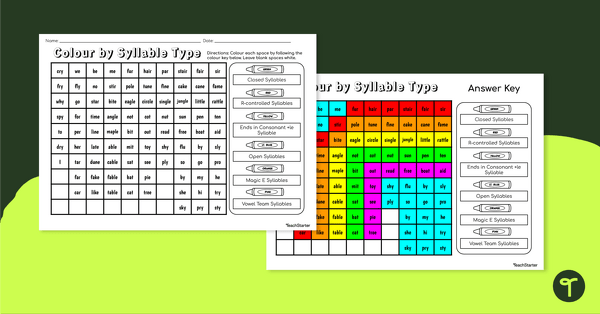
Colour by Syllable Type - Worksheet
Practise identifying the six syllable types in common words with this colour-coding activity.
- Plus Plan
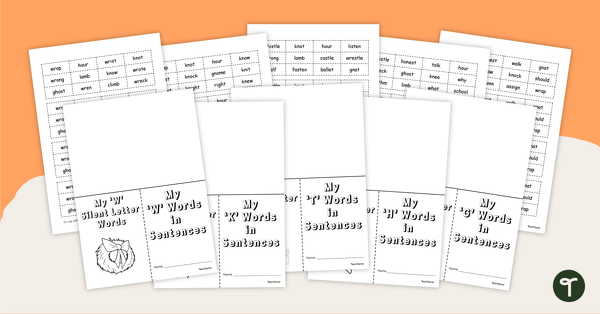
Silent Letter Flap Books
A great worksheet alternative to help your students identify silent letters in words.
- Plus Plan
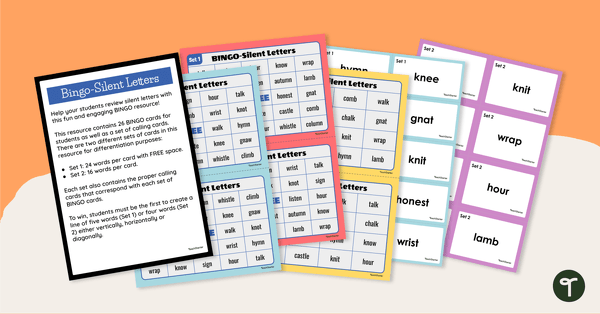
Silent Letters Bingo
Help students master silent letters with this engaging game of Bingo.
- Plus Plan
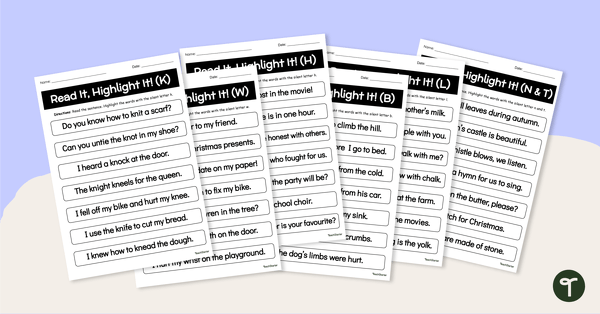
Silent Letter Worksheets - Read It, Highlight It!
Identify silent letters in words with this set of six decoding worksheets.
- Plus Plan
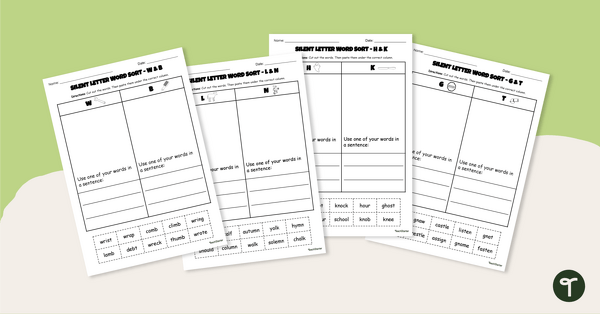
Silent Letters Word Sort - Cut and Paste Worksheets
Identify silent letters in words with this set of four cut-and-paste worksheets.
- Plus Plan
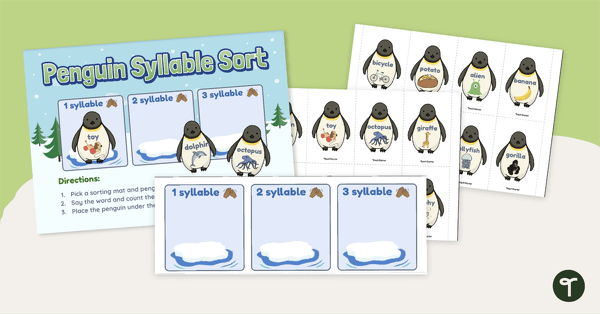
Counting Syllables Sorting Activity - Penguins
Help these freezing cold syllable penguins escape the frigid water by sorting them onto the correct ice floes.
- Plus Plan
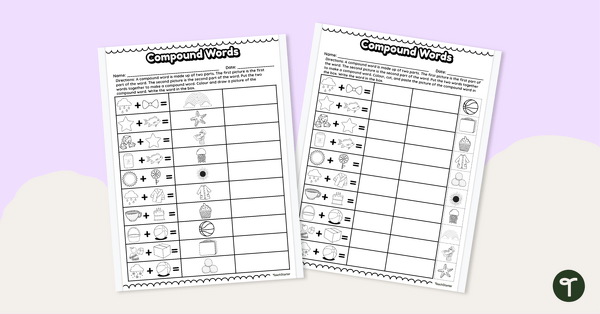
Read and Write Compound Words Worksheet
Explore compound words with these differentiated worksheets for early learners.
- Plus Plan
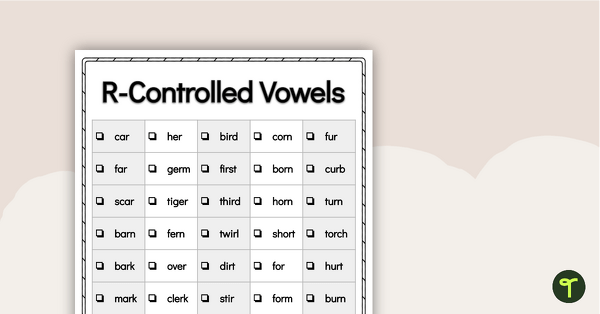
Word Study List - R-Controlled Vowels
Introduce and explore words containing r-controlled vowels with this extensive list of words.
- Plus Plan
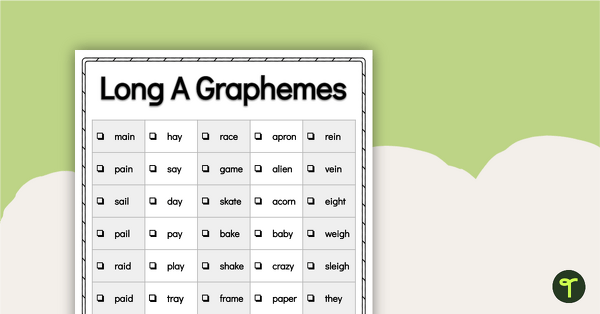
Word Study List - Long A Graphemes
Introduce and explore words containing graphemes that make the ‘long a’ sound with this extensive list of words.
- Plus Plan
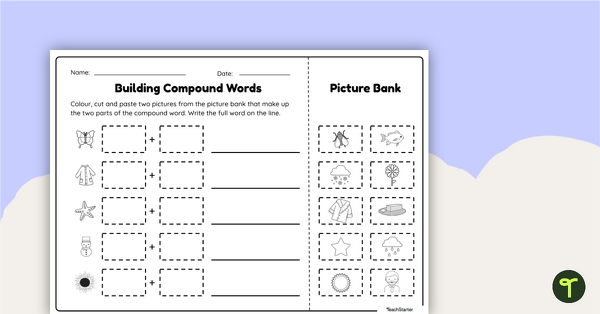
Building Compound Words - Cut and Paste Worksheet
Cut, paste, and write to form open and closed compound words with a word-building worksheet.
- Plus Plan
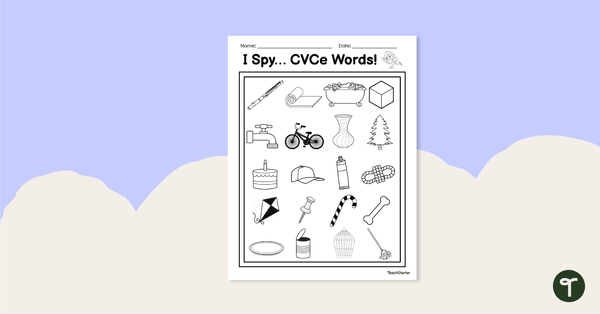
I Spy CVCe Words - Worksheet
Identify words that contain the magic e with this printable black and white worksheet.
- Plus Plan
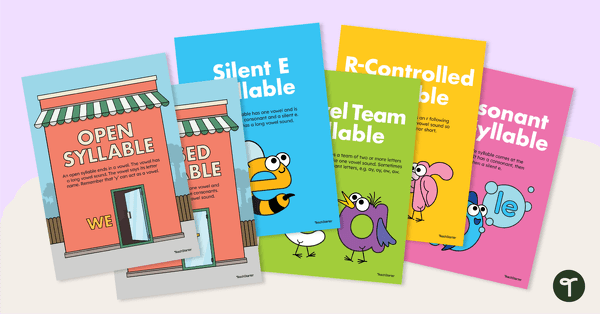
Types of Syllables Posters
Remind your students about the most common syllable types with this set of classroom display posters.
- Plus Plan
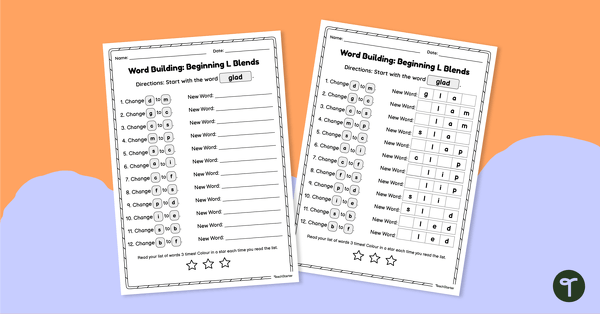
Word Chain Worksheet - Beginning L Blends
Manipulate the individual phonemes in words to create new ones with this differentiated word-building worksheet.